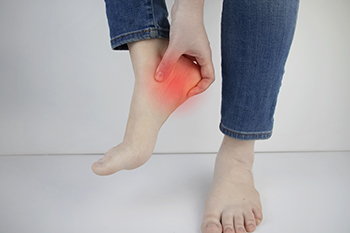Webster (281) 316-3338
Alvin (281) 331-3525
Webster (281) 316-3338
Alvin (281) 331-3525

Foot pain affects millions of people, impacting mobility and quality of life. The most common areas for foot issues include the heel, arch, toes, and ball of the foot. Conditions like plantar fasciitis, bunions, and metatarsalgia frequently cause discomfort. It is estimated that nearly 75% of people experience foot pain at some point, with a higher prevalence in older adults and those with active lifestyles or jobs that require prolonged standing. Self-assessment for foot pain can involve gently pressing on the affected area and noting if pain occurs with movement. Reduced mobility or swelling may signal underlying issues. Diagnosis typically involves a physical exam, sometimes with imaging like X-rays. Treatment options vary, from rest to orthotics, targeted exercises, and, in severe cases, surgery. Early attention to foot pain helps prevent chronic discomfort and supports long-term mobility. If you have foot pain, it is suggested that you visit a podiatrist for a proper diagnosis and treatment options.
Foot Pain
Foot pain can be extremely painful and debilitating. If you have a foot pain, consult with Dr. Douglas Webb from Texas. Our doctor will assess your condition and provide you with quality foot and ankle treatment.
Causes
Foot pain is a very broad condition that could be caused by one or more ailments. The most common include:
Diagnosis
To figure out the cause of foot pain, podiatrists utilize several different methods. This can range from simple visual inspections and sensation tests to X-rays and MRI scans. Prior medical history, family medical history, and any recent physical traumatic events will all be taken into consideration for a proper diagnosis.
Treatment
Treatment depends upon the cause of the foot pain. Whether it is resting, staying off the foot, or having surgery; podiatrists have a number of treatment options available for foot pain.
If you have any questions, please feel free to contact one of our offices located in Alvin and Webster, TX . We offer the newest diagnostic and treatment technologies for all your foot care needs.

Diabetic foot ulcers are serious wounds that develop on the feet of individuals with diabetes, primarily due to nerve damage and poor circulation. Common causes include prolonged pressure, injury, or infection, which can occur when blood sugar levels are poorly managed. Symptoms typically include red or swollen areas, open sores, and sometimes drainage or a foul odor. If left untreated, these ulcers can lead to severe infections and even amputation. Treatment involves wound care, proper footwear, and controlling blood sugar levels. A podiatrist plays a key role in managing diabetic foot ulcers, offering specialized assessments, debridement of the wound, and creating a tailored care plan. They can also provide advice on footwear to prevent further injury. If you or a loved one is experiencing symptoms of a diabetic foot ulcer, it is suggested you make an appointment with a podiatrist. Early intervention can help prevent complications and promote healing.
Diabetic foot care is important in preventing foot ailments such as ulcers. If you are suffering from diabetes or have any other concerns about your feet, contact Dr. Douglas Webb from Texas. Our doctor can provide the care you need to keep you pain-free and on your feet.
Diabetic Foot Care
Diabetes affects millions of people every year. The condition can damage blood vessels in many parts of the body, especially the feet. Because of this, taking care of your feet is essential if you have diabetes, and having a podiatrist help monitor your foot health is highly recommended.
The Importance of Caring for Your Feet
Patients with diabetes should have their doctor monitor their blood levels, as blood sugar levels play such a huge role in diabetic care. Monitoring these levels on a regular basis is highly advised.
It is always best to inform your healthcare professional of any concerns you may have regarding your feet, especially for diabetic patients. Early treatment and routine foot examinations are keys to maintaining proper health, especially because severe complications can arise if proper treatment is not applied.
If you have any questions please feel free to contact one of our offices located in Alvin and Webster, TX . We offer the newest diagnostic and treatment technologies for all your foot and ankle needs.

A bunion is a bony bump that forms at the base of the big toe joint, causing the toe to angle toward the other toes. This deformity creates a noticeable lump on the side of the foot, often leading to redness, swelling, and tenderness surrounding the affected area. Bunions can cause a dull ache or sharp pain, especially when wearing tight shoes. Diagnosis is typically straightforward. A podiatrist will assess the foot’s shape and may use X-rays to confirm the degree of misalignment and rule out other conditions, such as arthritis or gout, which can cause similar symptoms. Treatment varies based on severity. Mild cases may be managed with wider shoes, padding, and custom orthotics. In more advanced cases, surgery may be recommended to realign the joint and correct the deformity. If you have a bunion that is causing you discomfort, it is suggested that you schedule an appointment with a podiatrist to get appropriate treatment.
If you are suffering from bunions, contact Dr. Douglas Webb of Texas. Our doctor can provide the care you need to keep you pain-free and on your feet.
What Is a Bunion?
A bunion is formed of swollen tissue or an enlargement of boney growth, usually located at the base joint of the toe that connects to the foot. The swelling occurs due to the bones in the big toe shifting inward, which impacts the other toes of the foot. This causes the area around the base of the big toe to become inflamed and painful.
Why Do Bunions Form?
Genetics – Susceptibility to bunions are often hereditary
Stress on the feet – Poorly fitted and uncomfortable footwear that places stress on feet, such as heels, can worsen existing bunions
How Are Bunions Diagnosed?
Doctors often perform two tests – blood tests and x-rays – when trying to diagnose bunions, especially in the early stages of development. Blood tests help determine if the foot pain is being caused by something else, such as arthritis, while x-rays provide a clear picture of your bone structure to your doctor.
How Are Bunions Treated?
If you have any questions, please feel free to contact one of our offices located in Alvin and Webster, TX . We offer the newest diagnostic and treatment technologies for all your foot care needs.

Plantar fasciitis is a common foot condition characterized by pain in the heel and bottom of the foot, often worsening with first steps in the morning or after long periods of sitting. The primary cause is inflammation of the plantar fascia, a thick band of tissue connecting the heel to the toes. Factors such as excessive running, obesity, and wearing unsupportive footwear can contribute to its development. Symptoms typically include sharp pain that may subside with activity but can return after rest. Relief methods include stretching exercises and orthotic inserts, to reduce inflammation. It is also beneficial to rest and avoid activities that can worsen the pain. Plantar fasciitis can cause severe pain and discomfort and may cause difficulty in completing daily activities. If you have this condition, it is suggested that you consult a podiatrist who can effectively treat this problem.
Plantar fasciitis can be very painful and inconvenient. If you are experiencing heel pain or symptoms of plantar fasciitis, contact Dr. Douglas Webb from Texas. Our doctor can provide the care you need to keep you pain-free and on your feet.
What Is Plantar Fasciitis?
Plantar fasciitis is the inflammation of the thick band of tissue that runs along the bottom of your foot, known as the plantar fascia, and causes mild to severe heel pain.
What Causes Plantar Fasciitis?
How Can It Be Treated?
While very treatable, plantar fasciitis is definitely not something that should be ignored. Especially in severe cases, speaking to your doctor right away is highly recommended to avoid complications and severe heel pain. Your podiatrist can work with you to provide the appropriate treatment options tailored to your condition.
If you have any questions please feel free to contact one of our offices located in Alvin and Webster, TX . We offer the newest diagnostic and treatment technologies for all your foot and ankle needs.